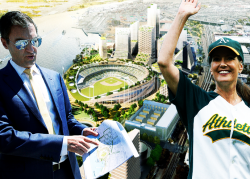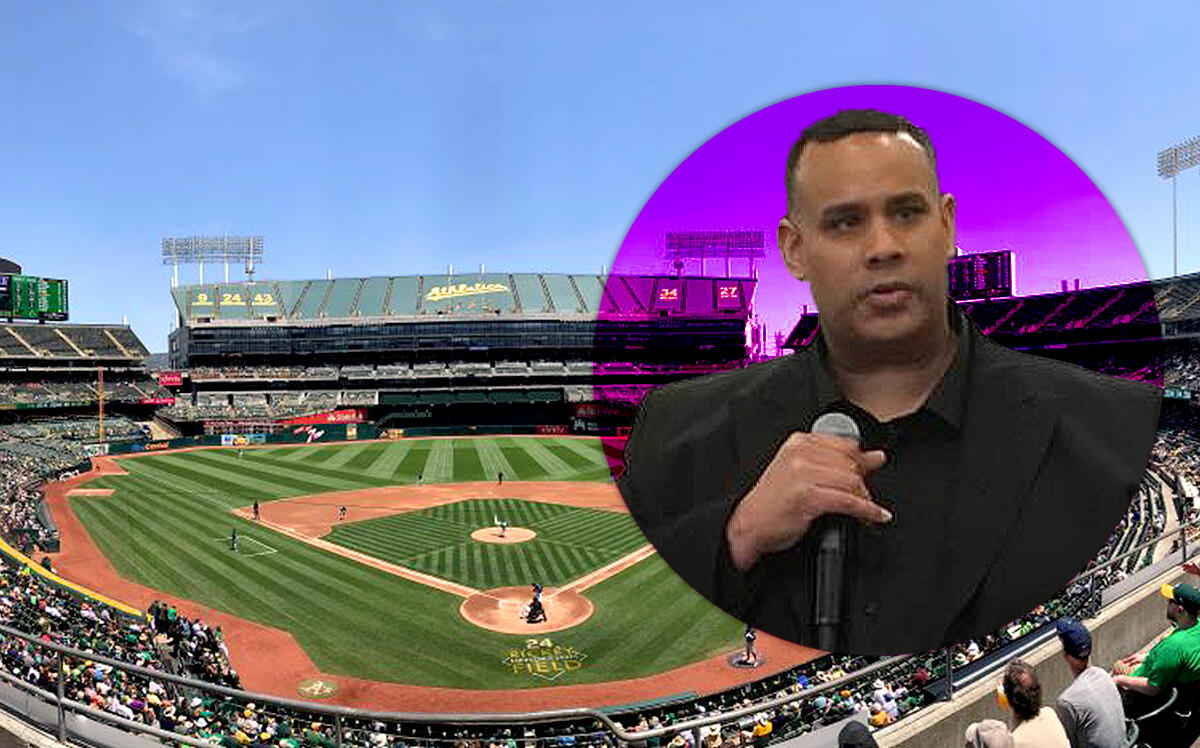 Alameda County supervisors want in on Oakland A’s waterfront ballpark development
Alameda County supervisors want in on Oakland A’s waterfront ballpark development
Trending
Oakland City Council selects African-American Sports and Entertainment Group to develop Coliseum site
AASEG’s proactive community outreach cited as the main reason behind the unanimous decision

The Oakland City Council unanimously decided to enter into exclusive negotiations with the African American Sports Entertainment Group as the developers of the city’s 100-acre Coliseum site, home of the Oakland A’s.
Council members cited the AASEG’s community outreach efforts as a key reason for choosing it over another Black-run development group led by former A’s star pitcher Dave Stewart and baseball agent Lonnie Murray. AASEG had attended everything from neighborhood cleanup days to town hall discussions and also signed agreements to work in conjunction with several East Oakland community groups.
Both groups promised to remake the site, the largest piece of public land in the city, to create economic opportunities and attract further investment.
“I can’t underscore enough how important getting everyday people on board is,” said Council member Carroll Fife, who added that in her 25 years of community organizing she has never seen the kind of outreach efforts initiated by AASEG in the months before the vote.
The winning group includes founding partner Ray Bobbitt and former Oakland city manager Robert Bobb, working with Black-owned investment firm Loop Capital. Its vision for the site involves housing, retail, a sports and entertainment hall of fame, and a stadium for an NFL team owned by African-Americans. At the meeting, Bobb said his group’s goal was to move ahead on a project “with the excellence that Oakland deserves” and that AASEG was “not about dictating to the community.”
Stewart and Murray’s presentation emphasized that their group had the “closest relationship” with the A’s. The MLB team bought half the Coliseum site from Alameda County for $85 million in 2019 and previously made a bid, rebuffed by the city, to buy the other half as well.
“Without an agreement with the A’s, the site sits empty,” Murray explained.
Yet that connection with the MLB team may have hurt Murray and Stewart’s chances. Councilmember Taylor, whose district is adjacent to the Coliseum site, said that he felt the developers needed to “push the A’s forward” rather than follow their lead.
A’s team President Dave Kaval as well as MLB officials have stated that the team will refuse to continue playing at the Coliseum after its lease expires in 2024 unless a new 35,000-seat waterfront ballpark, as well as about 3,000 homes, hotel rooms, office space and an entertainment complex near Jack London Square is under construction by then.
Those negotiations are still ongoing, with the A’s also seriously pondering a move to Las Vegas, which already lured away the Raiders football team in 2017, after the city refused to substantially renovate or rebuild the 1960s-era Coliseum.
What to do with the Coliseum site after the A’s depart is a question that Oakland has been pondering for years. It seemed possible even a decision on moving forward with a developer would be pushed out to 2022, as city staff had asked to table the decision on who would get to pay $200,000 a year and an initial project payment of no less than $2.5 million to sign an exclusive negotiating agreement with the city.
They requested a few more months to cull through the two groups’ credentials and finances, but ultimately almost all of the council members said that additional review could happen during the next 12 to 18 months of negotiations with the developers.
“It’s Important to acknowledge what this is and what it isn’t,” said Councilmember Taylor. The ENA commitment is a “path forward” toward remedying the “travesty of the underutilized property,” not a specific development plan. The city still has not decided if it wants to sell or lease the site and when the ENA is up in 18 months, it could choose to sign a development agreement, extend the negotiation process or even start over with another developer.
Councilmember Treva Reid, who represents the district where the Coliseum is located, said that some of her constituents had asked her to pause before selecting a developer but that the majority were in favor of moving the process along with AASEG.
Only Councilmember Dan Kalb resisted taking a vote Tuesday night, saying that it was “unprecedented” during his more than eight years on the city council to go against city staff’s requests for a few more months of further review. He initially voted to abstain from the vote choosing AASEG, before changing his vote to a yes “in the spirit of unanimity” when it became clear the council was otherwise in agreement.
Though the votes all went to AASEG, many council members expressed dissatisfaction at having to choose just one Black-led development team, both with deep ties to the community, over the other.
It was upsetting to see the groups “pitted against each other,” said Councilmember Fife, who hoped there would be more development opportunities in the city for Stewart and Murray’s team in the future. Councilmember Noel Gallo said he knew members of both groups “since [their] high school years” and wondered if there was a way the groups could work together on the project after the decision.
Read more
 Alameda County supervisors want in on Oakland A’s waterfront ballpark development
Alameda County supervisors want in on Oakland A’s waterfront ballpark development




